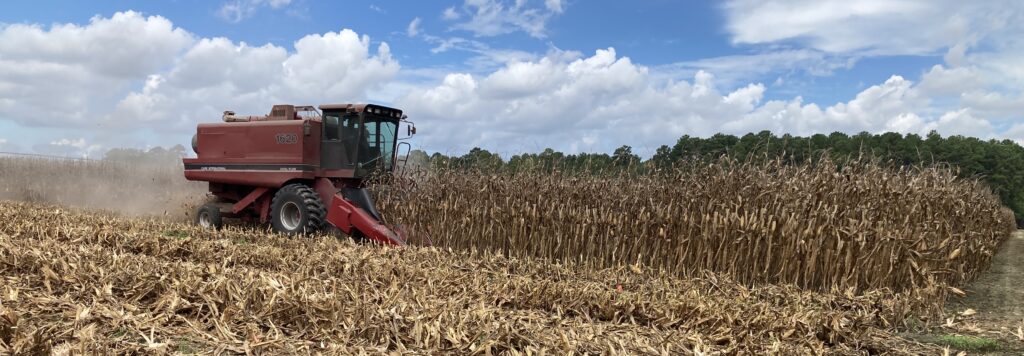2022 Multi-County Regional Corn Hybrid Investigation | Yield Results
go.ncsu.edu/readext?892587
en Español / em Português
El inglés es el idioma de control de esta página. En la medida en que haya algún conflicto entre la traducción al inglés y la traducción, el inglés prevalece.
Al hacer clic en el enlace de traducción se activa un servicio de traducción gratuito para convertir la página al español. Al igual que con cualquier traducción por Internet, la conversión no es sensible al contexto y puede que no traduzca el texto en su significado original. NC State Extension no garantiza la exactitud del texto traducido. Por favor, tenga en cuenta que algunas aplicaciones y/o servicios pueden no funcionar como se espera cuando se traducen.
Português
Inglês é o idioma de controle desta página. Na medida que haja algum conflito entre o texto original em Inglês e a tradução, o Inglês prevalece.
Ao clicar no link de tradução, um serviço gratuito de tradução será ativado para converter a página para o Português. Como em qualquer tradução pela internet, a conversão não é sensivel ao contexto e pode não ocorrer a tradução para o significado orginal. O serviço de Extensão da Carolina do Norte (NC State Extension) não garante a exatidão do texto traduzido. Por favor, observe que algumas funções ou serviços podem não funcionar como esperado após a tradução.
English
English is the controlling language of this page. To the extent there is any conflict between the English text and the translation, English controls.
Clicking on the translation link activates a free translation service to convert the page to Spanish. As with any Internet translation, the conversion is not context-sensitive and may not translate the text to its original meaning. NC State Extension does not guarantee the accuracy of the translated text. Please note that some applications and/or services may not function as expected when translated.
Collapse ▲As we draw closer to the end of 2022 we will soon turn our attention to making crop production decisions for next year. Chief among those decisions is hybrid selection for your soil, weather, and management practices.
Take a look below at the 2022 Regional Corn Hybrid investigation results for Bertie, Hertford, Martin, and Nash counties. This year these N.C. Cooperative Extension County Centers teamed up to provide unbiased research-based knowledge on regional corn yields to their constituents. We’d like to extend a thank you to all the companies that provided inputs for this investigation.
For Bertie County this investigation relied heavily on the support of the Peanut Belt Research Station (PBRS). The efforts of PBRS and their continuing collaboration with Bertie County Cooperative Extension is greatly appreciated.
Although 2022 was a tough year for corn production in Bertie County there have been pockets of grain yields running at or above the county average. In total the Bertie site received 21.9 inches of water with 18.65 inches from rainfall, and 3.25 inches of irrigation.
2022 Multi-County Corn Hybrid Yield Results – Bertie, Hertford, Martin, & Nash
Page 1: Corn hybrids are listed for all four sites with the top three yielding hybrids indicated. The average yield across the four sites and corresponding rank is also shown.
Page 2: Plot information including site, cooperator, agent, and management practices.
Also, check out the 2022 statewide corn hybrid results on the NC State Official Variety Testing website: 2022 NC State Corn OVT Results
Expanded corn performance data and information can be accessed through the Variety Selection Tool
If you have question please contact Edward Godfrey III or Billy Barrow at 252-794-5317





